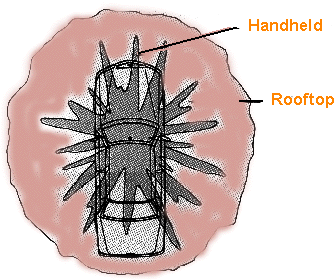
 |
JPL's Wireless Communication Reference WebsiteChapter: Cellular Telephone Networks. |
In a later phase when more subscribers are using the system, the operator typically attempts to improve capacity by adding more base stations. The grid of base stations becomes denser and signal-to-noise ratio is no longer limiting the performance. Because of dense reuse, co-channel and adjacent channel interference become more of concern.
 GSM link budget calculator
GSM link budget calculatorDefault system parameters used in the spreadsheet below are similar to the GSM specs, We choose a handheld user indoor with a cell radius of 1 km. Typically, GSM only covers handheld indoor subscribers that are quite close to the base station.
The effect of interference is taken into account by simply assuming that the interference power level is a few (specifiable) dBs above the receiver noise floor. In networks dense reuse, this becomes an oversimplification.
| GSM subscribers tend to use their handsets in
their car, without connecting an external antenna.
This gives a substantial attenuation, and resulting
reduction of the link budget. The figure compares the antenna coverage of a rooftop antenna with that of a handset inside the car.
Source credit: Procom, Denmark. |

|